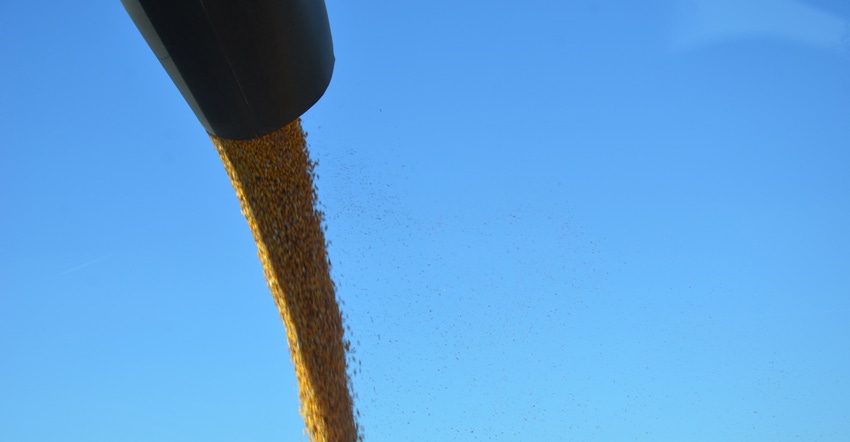
Crop management takes on a whole new meaning this week if you still have crops to plant and you have crop insurance. With prevented planting dates looming, you will have decisions to make. Specialists believe it may come down to a field-by-field decision. Those decisions will also be impacted by exactly where you farm and how much growing season you believe you have left.
While the immediate decisions are whether to plant — and if so, what — those decisions may have consequences that reach well beyond the next week or so, and beyond your farm gate. For example, what if you already have corn contracted, and you are worried you may not end up growing corn, or that corn prices may take off if there is a large acreage shift?
One farmer reported to Farm Progress just a couple of days ago that he already bought back contracts. He still intends to plant corn, but uncertainty over whether that will happen, and price uncertainty, caused him to decide the best option was to get out of the contract.
Jim Mintert and Michael Langemeier, Purdue University Extension agricultural economists and director and associate director of the Purdue Center for Commercial Agriculture, respectively, weigh in on this and other unintended consequences of the deepening planting delay in this interview with Farm Progress.
What if you’ve already forward-contracted corn but don’t plant any or enough to fulfill contracts? If you signed a cash-forward contract with an elevator, terminal or processor, you need to contact the other party and determine what their policy is. Alternatives include buying the corn from someone else and fulfilling the contract that way, or negotiating with the company that the contract is with to terminate the contract.
If the price moved higher after the farmer sold the grain, most firms will expect the producer to pay the difference between the contracted price and current market price as a starting point. Depending on the situation [and contract language], they might also add a service fee.
Communication between the producer and the elevator, terminal or processor is important. For example, if you have a contract for fall delivery and know you won’t have the corn available to fulfill the contract, contact the other party sooner rather than later. Don’t wait until fall to let them know your situation.
Are there obligations to input suppliers such as seed companies, fertilizer companies and others? Are there seed restocking fees if you don’t plant and return seed? This will vary according to the individual input supplier. In most cases, input suppliers try hard to work with their customers on this. Farmers should get in touch with their input suppliers, and discuss what their policy is and what the alternatives are. Again, do it sooner rather than later.
If there are more prevented planting claims than usual, does the government stand all the loss, or do private insurance companies stand part of the loss? It’s shared between government [USDA’s Risk Management Agency] and the private company that sold the insurance policy. Essentially, private companies reinsure with RMA. When a company writes a policy, they have a choice with respect to which reinsurance pool they place the policy in. So, on some policies, USDA-RMA absorbs nearly all risk. On other policies, the private company absorbs a majority of the risk, depending on the pool the policy was placed in when it was sold.
Some people say I can plant soybeans later on prevented planting corn ground. Is that true? Yes, but you don’t get the full prevented planting payment. First, you can’t plant soybeans and collect a corn prevented planting payment until after the late-planting period for corn ends — June 25 in Indiana. Second, instead of receiving the 55% prevented planting payment for corn, you would receive 35% of that amount for prevented planting.
To see how this would work, assume your corn actual production history is 200 bushels per acre and you carried 85% RA [Revenue Assurance] insurance. In this scenario, your corn prevented planting payment would equal (200 bushels times $4) times 85% times 55% times 35%, which equals $130.90 per acre.
Third, your soybean crop insurance coverage would decline because you would be past the “final planting date” for soybeans. After the soybean final planting date of June 20 in Indiana, you can still plant soybeans and insure them, up through July 15, but your coverage declines at the rate of 1% per day.
If I take prevented planting on corn, can I just take it on certain fields or even parts of fields? We’re told crop insurance goes by the 20-20 rule. You can take prevented planting on less than an entire field, but the prevented planting acreage must be a minimum of 20 acres, unless the field size is less than 100 acres. If the field in question is less than 100 acres in total, then to qualify for prevented planting, the portion of the field that you choose to take prevented planting on must be at least 20% of the field. For example, if you choose to claim on part of an 80-acre field, the minimum prevented planting acreage in that field would be 16 acres.
About the Author(s)
You May Also Like




